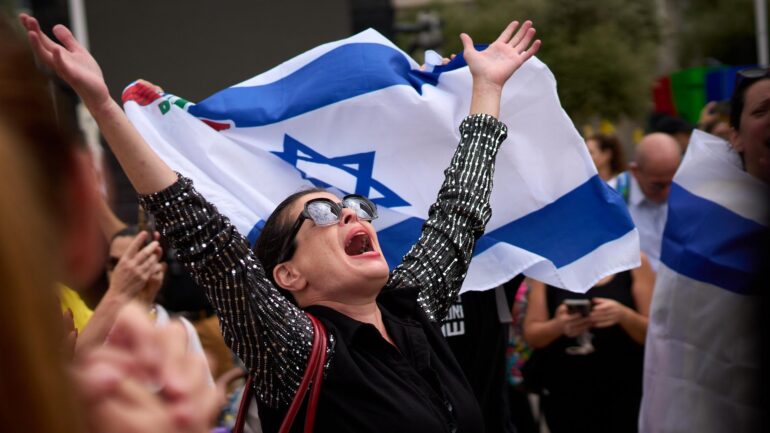On October 10, 2025, Israel’s government approved a historic ceasefire agreement with Hamas, marking a significant step toward ending the two-year war in Gaza. The deal, ratified by the Israeli cabinet, paves the way for halting hostilities within 24 hours and securing the release of Israeli hostages held in Gaza within 72 hours after that. This agreement, brokered under U.S. President Donald Trump’s peace initiative, is a major diplomatic breakthrough aimed at resolving one of the Middle East’s most protracted conflicts.
Key Details of the Ceasefire Deal
The agreement involves a phased approach, starting with the release of Israeli hostages in exchange for hundreds of Palestinian prisoners held by Israel. Currently, 20 Israeli hostages are believed to be alive in Gaza, while 26 are presumed dead, and the fate of two remains unknown. Hamas has noted that recovering the bodies of deceased hostages may take longer than releasing those who are alive. Alongside the hostage exchange, Israel will partially withdraw its troops from Gaza, and humanitarian aid, including food and medical supplies, will be allowed to flow into the region to support civilians devastated by the war.
The ceasefire follows intense mediation efforts in Sharm el-Sheikh, Egypt, with the United States, Qatar, Egypt, and Turkey playing key roles. The deal ensures that fighting will stop, providing much-needed relief to Gaza, where over 67,000 Palestinians have been killed since the conflict escalated following Hamas’s attack on southern Israel on October 7, 2023, which killed 1,200 people and led to the capture of 250 hostages.
Reactions and Celebrations
The announcement sparked celebrations in both Israel and Gaza. In Tel Aviv’s Hostage Square, families of hostages, like Einav Zaugauker, whose son Matan is among those held, expressed overwhelming relief. “I can’t breathe, I can’t explain what I’m feeling… it’s crazy,” Zaugauker said amid celebratory flares. In Gaza, residents like Abdul Majeed Abd Rabbo in Khan Younis rejoiced, stating, “Thank God for the ceasefire, the end of bloodshed. The entire Gaza Strip is happy.”
World leaders also praised the breakthrough. French President Emmanuel Macron called for the agreement to mark “the beginning of a political solution based on the two-state solution.” British Prime Minister Keir Starmer urged all parties to honor their commitments to build lasting peace, while United Nations Secretary-General António Guterres described the deal as a “desperately needed breakthrough.”
Challenges and Opposition
Despite the optimism, challenges remain. The list of Palestinian prisoners to be released is still being finalized, with Hamas pushing for the release of high-profile convicts. Further phases of Trump’s 20-point peace plan, including Gaza’s governance and Hamas’s future, are yet to be negotiated. In Israel, Prime Minister Benjamin Netanyahu faces resistance from far-right coalition members, such as Finance Minister Bezalel Smotrich and National Security Minister Itamar Ben-Gvir, who oppose the deal and demand Hamas’s dismantlement.
Israeli strikes continued in Gaza before the ceasefire’s official start, with a strike in Gaza City killing at least two people and trapping others under rubble. However, signs of de-escalation emerged, with reports of Israeli forces demolishing positions and withdrawing from areas like the Netzarim corridor.
Trump’s Role and Regional Impact
President Trump, who announced the mediators’ agreement on October 9, 2025, described the deal as a “momentous breakthrough” and expressed hope for “an everlasting peace.” He plans to visit Egypt and Israel on October 12 to attend a potential signing ceremony and address the Israeli Knesset, a rare honor for a U.S. president. The U.S. and Qatar have assured Hamas that Israel will not resume fighting after the initial phase, a commitment echoed by Israeli Foreign Minister Gideon Sa’ar.
The war, which has drawn in regional players like Iran, Yemen, and Lebanon, has deepened Israel’s international isolation and strained U.S.-Israel relations. The ceasefire represents Trump’s most significant foreign policy achievement to date and a critical step toward stabilizing the Middle East. Western and Arab nations are already discussing peacekeeping forces and reconstruction aid for Gaza, which has been devastated by the conflict.
Looking Ahead
While the ceasefire and hostage release mark a turning point, the road to lasting peace remains uncertain. The deal’s success depends on both sides adhering to their commitments and navigating the complex political and humanitarian challenges ahead. For now, the agreement offers hope to millions affected by the war, with the promise of relief for Gaza’s civilians and the safe return of hostages to their families.
